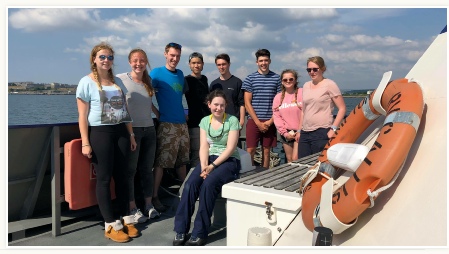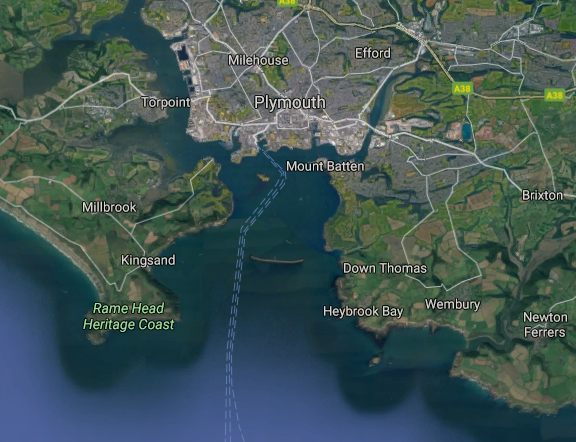







Plymouth Sound and the Tamar Estuary are bodies of water situated on the South West coast of England on the border of Cornwall and Devon. They are areas of special scientific interest that have been protected since the 1990’s making it an ideal location to conduct scientific research.
Together we form a group of 9 University of Southampton students studying Ocean and Earth Science all interested in studying the geological, geophysical, biological, chemical, and physical properties of this area. In order to conduct our research, several investigations were conducted at different locations around Plymouth, on and off the water (see map).

 Offshore
Geology
Estuary
Geophysics
Offshore
Geology
Estuary
Geophysics
Research Location:
Plymouth is a semi-enclosed bay located to the south of England. It is fed by two main rivers: The River Tamar and The River Plym. The Tamar estuary is 98 km long creating a significant amount of discharge, and as the largest riverine input to the bay, it is an area of significant research interest. The Tamar Estuary is a mesotidal, partially mixed estuary thanks to mixing by both tide and wind. As a consequence, the Tamar estuary waters are horizontally stratified until the thermal front has passed the Plymouth breakwater where the water column becomes stratified vertically. The Plymouth Breakwater marks the edge of Plymouth Sound. Being built in 1812, it is a 1560 metre stone barrier that absorbs and dissipates wave energy that threatens the bay. It is 13m wide at the top and 65m wide at the bottom. South of the breakwater a thermal front is generated, creating a dynamic area of interest for scientists like ourselves. All of these features facilitate the investigation of the following aims.
Click on the map’s investigation sites to see our data and initial findings!
Investigation Aims:
Understand the processes that control the chlorophyll distribution in Plymouth’s offshore waters
Determine the sources and sinks of nutrients in the Tamar estuary
Determine the processes controlling the physical stability of the nearshore and offshore waters of Plymouth
Determine the short, medium and long-term temporal variability of offshore physical and biological structure in the Western Channel
Understand the coastal dynamics and map the benthic habitat
Understand how the tidal range dictates the environmental niche for species in the Upper Estuary
←Click here to find out more about our vessels
The views and opinions expressed are those of the individuals and not necessarily those of the University of Southampton